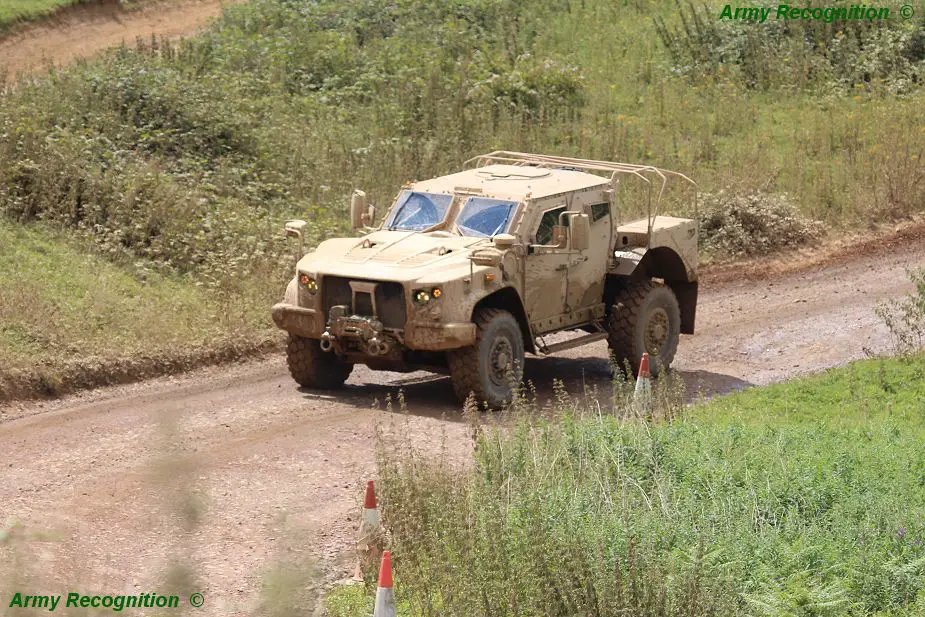US: JLTV demonstrated to Regional Medic and Cold Steel II soldiers
Soldiers at Fort McCoy (Wisconsin) assigned to Regional Medic and Operation Cold Steel II received a peek at the new Army and Marine Joint Light Tactical Vehicle to be fielded in 2019.

The Joint Light Tactical Vehicle (JLTV), successor of the Humvee (Picture source: Army Recognition)
The Joint Light Tactical Vehicle (JLTV) is the newest 4x4 armored vehicle to enter the Army’s fleet. The JLTV will replace most Army Humvees with four mission packages configurations including general purpose, heavy gun carrier, close combat weapons carrier and a utility vehicle. The vehicle will not replace specialty Humvees such as those with snow plows.
“It’s the future of America’s Army Reserve,” said LTG Charles D. Luckey, Chief of Army Reserve and Commanding General, United States Army Reserve Command. “I want you to know it’s coming. I want you to know it’s all part of us building combat-readiness, capability and lethality for America’s Army Reserve.”
The Army anticipates purchasing almost 50,000 vehicles, while the Marines are looking at more than 5,500, according to Capt. William Ponder, assistant product manager, Government Furnished Equipment, Fielding Integration, Joint Program Office – JLTV System Integration.
The JLTV will support a two- or four-man crew plus gunner, similar to the Humvee. In addition, it increases the protection for that crew. This protection is similar to that provided by the mine-resistant, ambush-protected all-terrain vehicle, however the JLTV is approximately two-thirds the weight, improving mobility and transportability.
Additionally, the JLTV payload capacity can range from 3,500 to 5,100 pounds without losing protection or mobility. It also offers greater speed over terrain, acceleration, reliability and fuel efficiency when compared to the Humvee.
“JLTV meets the challenges of a 21st century, full-spectrum operating environment, filling a critical gap in today’s Army and U.S. Marine Corps light tactical vehicle fleets,” said Ponder. “It restores payload and performance that were traded in order to add protection in recent conflicts and improve commanders’ ability to balance payload, mobility performance and protection.”
The JLTV also provides connectivity as the first vehicle purpose-built for battlefield networks. It also boasts an integrated Drivers Smart Display Unit and Health Management System. These systems continuously monitor vehicle conditions, predicting and diagnosing faults, improving overall sustainability.
“JLTV is specifically designed to restore that balance in a package which is more affordable both to produce and to operate and sustain over the long run," said Ponder.
It’s the first vehicle purpose-built for the Army’s network and with growth potential to meet future mission requirements,” he added.
Soldiers can look for the first fielding of the JLTV to begin in early 2019.


























